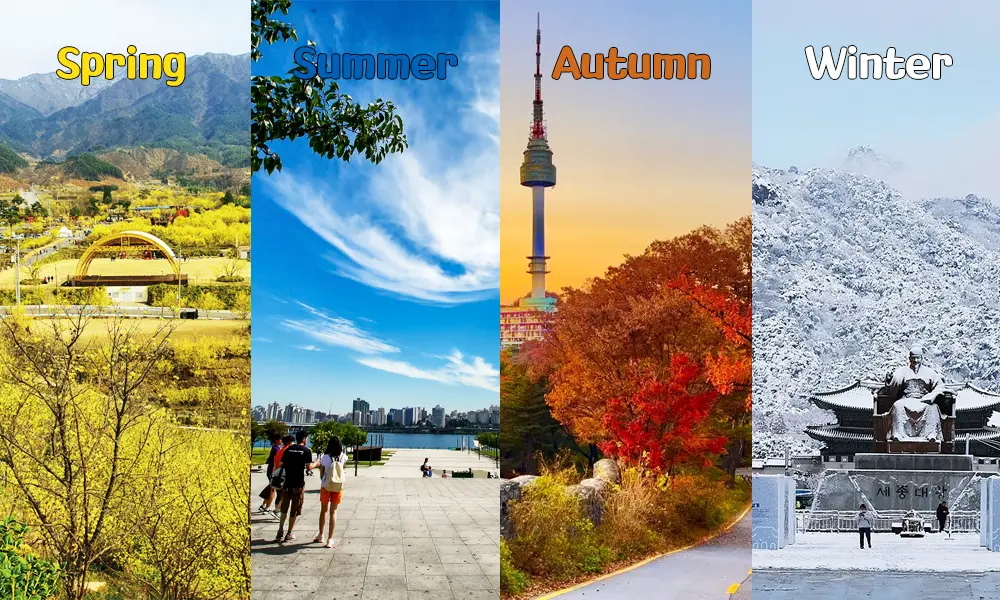
South Korea’s subway system is one of the most efficient, affordable, and convenient ways to get around the country, especially in major cities like Seoul, Busan, and Daegu. Whether you’re a tourist, a business traveler, or a student studying abroad, understanding how to use Korean subway will make your journey smooth and stress-free. However, if you’re unfamiliar with the system, navigating it can be overwhelming at first—with multiple lines, complex transfers, and different ticketing options.
But don’t worry! This comprehensive guide will break down everything you need to know about riding the Korean subway. From buying the right transportation card to understanding subway etiquette and transfer tips, this guide will help you travel like a seasoned local.
By the end of this article, you’ll be able to:
✅ Easily navigate the subway system with confidence.
✅ Save time and money by using smart travel hacks.
✅ Avoid common mistakes and etiquette faux pas.
✅ Maximize your subway experience while exploring Korea’s top attractions.
Let’s get started and master the Korean subway system! 🚇
1. Understanding How to Use Korean Subway 🗺️
Before stepping into a subway station, it’s important to understand the basics of the Korean subway system. With more than 23 subway lines across the country and over 10 million daily riders, South Korea has one of the busiest and most efficient subway networks in the world.
🔹 Key Features of the Korean Subway System
- Extensive Coverage – Major cities like Seoul, Busan, Incheon, Daegu, Daejeon, and Gwangju have well-developed subway networks.
- Multi-Language Signage – All stations have signs in Korean, English, Chinese, and Japanese, making it easier for foreigners to navigate.
- Color-Coded Lines – Each subway line is assigned a specific color and number, helping passengers quickly identify their routes.
- Fast and Punctual – Trains arrive every 2-5 minutes during peak hours and every 5-10 minutes off-peak.
- Late-Night Train Availability – Most subways run from 5:30 AM to midnight, but some lines extend their service on weekends.
🔗 Seoul Metro Official Website
2. Get a Transportation Card 🎫
Purchasing a transportation card is the best way to save time and money when using the subway. Instead of buying single-use tickets for every trip, you can simply tap and go with a T-money card or Cashbee card.
🔹 Benefits of Using a Transportation Card
✅ Cheaper fares – You’ll get a discount compared to paper tickets.
✅ Faster boarding – No need to stop at ticket vending machines.
✅ Seamless transfers – Easily switch between subway lines and buses.
✅ Nationwide usability – Can be used on subways, buses, taxis, and even some convenience stores.
🔹 Where to Buy a Transportation Card?
- Convenience stores (GS25, CU, 7-Eleven).
- Subway station vending machines.
- Airport kiosks (Incheon and Gimpo).
🔗 T-money Card Official Website
3. Use Subway Apps for Easy Navigation 📱
Even though the subway system is well-marked, using a navigation app can make your journey even smoother. Whether you need to find the fastest route, check real-time train arrivals, or plan transfers, these apps will save you time and hassle.
🔹 Best Korean Subway Apps
📌 KakaoMetro – Real-time train schedules, transfer guides, and route planners.
📌 Naver Maps – Provides walking directions, subway routes, and bus transfers.
📌 Subway Korea – Offline subway maps with fare calculators.
🔹 Why You Need a Subway App
🚄 Find the quickest route to your destination.
🔄 Plan smooth transfers between subway lines.
📅 Check train arrival times in real-time.
4. Follow Subway Etiquette 🚉
Korean subway etiquette is strictly followed, and failing to observe the rules might draw disapproving stares from locals. To make your ride comfortable and avoid awkward situations, here’s what you need to know:
🚫 Do’s and Don’ts in the Korean Subway
✅ DO offer seats to elderly passengers and pregnant women.
✅ DO stand on the right and walk on the left when using escalators.
✅ DO let passengers exit the train before boarding.
🚫 DON’T talk loudly or make phone calls.
🚫 DON’T eat or drink inside subway cars.
🚫 DON’T block subway doors while waiting.
🔗 Korean Subway Etiquette Guide
5. Learn How to Transfer Between Lines 🔄
Transfers between subway lines can be tricky, especially at major stations like Seoul Station, Hongik University, and Gangnam. Here’s how to transfer smoothly:
✔️ Follow the color-coded signs at each station.
✔️ Check the direction of the next train before boarding.
✔️ Look for express train options on certain lines.
✔️ Allow extra time for long transfer corridors.
6. Use the Right Subway Exits for Landmarks 🚪
Many major attractions have specific subway exits that lead directly to them. Taking the wrong exit can mean extra walking, so it’s good to know the correct one in advance.
📍 Myeongdong Shopping Street – Exit 6 or 7 (Myeongdong Station, Line 4)
📍 Gyeongbokgung Palace – Exit 5 (Gyeongbokgung Station, Line 3)
📍 Dongdaemun Market – Exit 8 or 9 (Dongdaemun Station, Line 1 & 4)
📍 Hongdae (Hongik University) – Exit 9 (Hongik University Station, Line 2)
7. Avoid Rush Hours for a Comfortable Ride ⏰
If you don’t like crowds and packed trains, avoid using the subway during peak hours:
⏰ Morning Rush Hour: 7:00 AM – 9:00 AM
⏰ Evening Rush Hour: 5:00 PM – 7:00 PM
During these times, subway cars are extremely crowded, making it hard to even move or breathe! 😨
🔍 FAQ: Frequently Asked Questions
1. Can I use my credit card instead of a T-money card?
Yes, some credit cards in Korea allow direct payment for subway fares, but a T-money card is more convenient.
2. Are subway announcements in English?
Yes, major subway stations announce stops in Korean, English, Chinese, and Japanese.
3. Can I get a refund on my T-money card balance?
Yes, refunds are available at designated convenience stores and subway stations, but a small fee applies.
4. What should I do if I get lost in the subway?
Use a subway navigation app or ask the station staff for help—they are usually very friendly!
5. Is Wi-Fi available in the subway?
Yes, free Wi-Fi is available at most subway stations and inside some trains.
6. How much does a typical subway ride cost?
A standard subway fare in Seoul starts at 1,250 KRW (~$1 USD) with a T-money card.
7. Can I bring large luggage on the subway?
Yes, but it’s recommended to avoid rush hours, as space can be limited.
8. Are there elevators and escalators for accessibility?
Yes, but some older stations have limited elevator access—check ahead if needed.
🎉 Now you’re ready to explore Korea like a pro! Safe travels and enjoy your subway journey! 🚇😊











































